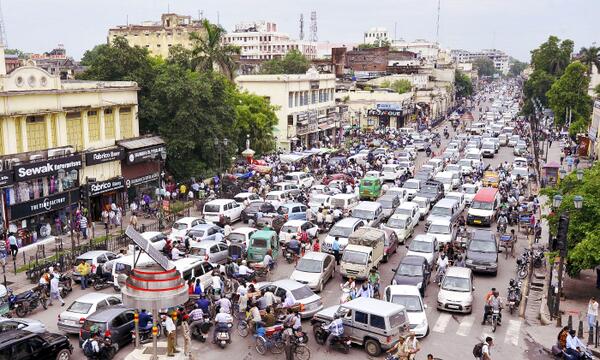
Uploaded on 2017-08-10 by Mitali Kumar
1. CHECK THE TEMPERATURE DIFFERENCES IN US CITIES As per the data computed on climate central, based on their analysis of summer temperatures in 60 of the largest U.S. cities, it was found that: • 57 cities had measurable urban heat island effects over the past 10 years. Single-day urban temperatures in some metro areas were as much as 27°F higher than the surrounding rural areas, and on average across all 60 cities, the maximum single-day temperature difference was 17.5°F. • The top 10 cities with the most intense summer urban heat islands (average daily urban-rural temperature differences) over the past 10 years are: • Las Vegas (7.3°F) • Albuquerque (5.9°F • Denver (4.9°F) • Portland (4.8°F) • Louisville (4.8°F) • Washington, D.C. (4.7°F) • Kansas City (4.6°F) • Columbus (4.4°F) • Minneapolis (4.3°F) • Seattle (4.1°F) • On average across all 60 cities, urban summer temperatures were 2.4°F hotter than rural temperatures. • Urban heat islands are even more intense at night. Over the past 10 years, average summer overnight temperatures were more than 4°F hotter in cities than surrounding rural areas 2. WHICH ARE THE MAIN UHI EFFECTS THAT YOU CAN IDENTIFY IN YOUR AREA? The monsoons have currently dissipated intense heat across Lucknow, but temperatures are rising and will continue to climb because of the way urban areas are expanding. With trees, lakes and open spaces replaced by roads, expanses of concrete with closely spaced multi-storeyed buildings—often in violation of zoning and setback laws—Indian cities are turning into “heat islands”. A clear trend is evident: The difference between the daytime maximum and night-time minimum daily temperatures—the diurnal temperature range (DTR)—is steadily declining. This indicates that concretising cores of cities are retaining heat, even as temperatures rise in formerly cooler outskirts, as they, too, urbanise. A higher range of temperature indicates greater cooling. The mean land surface temperature difference between the years 2002 and 2014 was found is 0.75 °C. The observed results showed that the central portion of the city exhibited the highest surface temperature compared to the surrounding open area, the areas having dense built-up displayed higher temperatures and the areas covered by vegetation and water bodies exhibited lower temperatures. UHI is most noticeable during summer and winter seasons. The main reason for this is the modification of land surface for construction work of buildings. The materials used for construction store heat and release it during the night. As population grows so will the number of buildings and thereby, increasing the average temperature. The effect of UHI has made human comfort at stake, with the average daily temperatures being unbearable for physical activities, increasing the reliance of air conditioning in buildings and hence increasing the energy demands, and pollution levels in the city. 3. WHICH ARE THE MEASURES YOU WOULD PROPOSE? Trees, green roofs, and vegetation can help reduce urban heat island effects by shading building surfaces, deflecting radiation from the sun, and releasing moisture into the atmosphere. • Build green infrastructure improvements into regular street upgrades and capital improvement projects to ensure continued investment in heat-reducing practices throughout the community. • Plant trees and other vegetation—Space in urban areas might be limited, but we can easily integrate small green infrastructure practices into grassy or barren areas, vacant lots, and street rights-of-way. • Build green roofs—Green roofs are an ideal heat island reduction strategy, providing both direct and ambient cooling effects. The result is improved air quality by reducing the heat island effect and absorbing pollutants. 4. IS UHI EFFECT CONCERNING POLICY MAKING IN YOUR AREA? India, being a developing country, hasn’t started viewing the ideas of climate change considerably in the city development. There have been no stringent policies that would help mitigate the effects of UHI, though as per the beliefs of the current Prime Minister, Mr. Narendra Modi, who wants to make India free of vehicles running on fuel, like petrol and diesel and rely on Electric Cars, as means of private transport by 2030. This would have a significant impact on the rising levels of greenhouse gasses which are amplifying the effect of UHI.